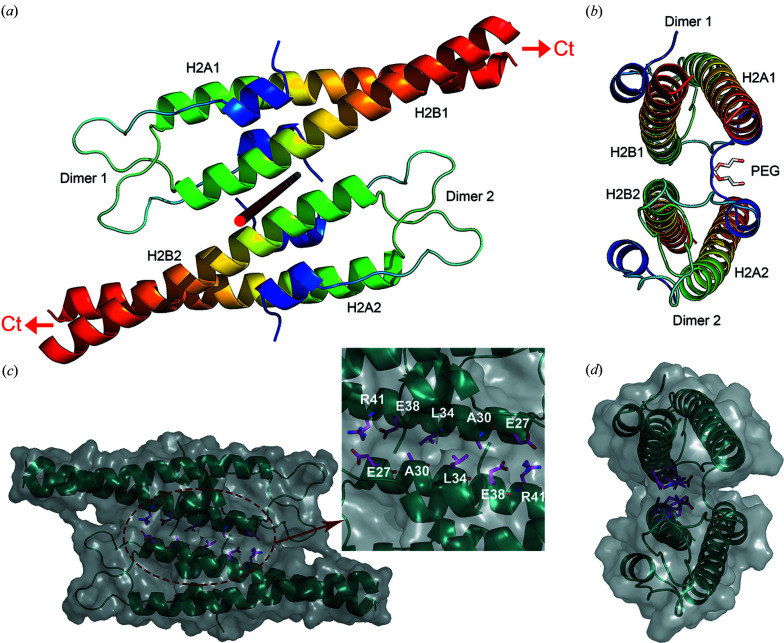Figure 2.
Oligomeric organization of N-Wag31. (a), (b) Two views of the ‘dimer-of-dimers’ form of N-Wag31 related by crystallographic twofold symmetry are shown as ribbons (Jones rainbow, blue to red). The coiled-coil forming H2 helices in both A and B chains in both dimers are labelled as follows: H2A1 and H2B1 in A and B chains of dimer 1, and H2A2 and H2B2 in A and B chains of dimer 2. The directions to the C-terminal domains (Ct) are marked with red arrows in (a). The twofold axis of rotation is shown as a red rod in (a). A PGE molecule bound to N-Wag31 is shown as sticks in (b). (c), (d) Two views of the ‘dimer-of-dimers’ of N-Wag31 are shown as ribbons (cyan) within the semi-transparent molecular surface (grey) of the tetramer. Side chains of the interface-forming residues are shown as balls and sticks (carbon in magenta, oxygen in red and nitrogen in blue). A zoomed view of the side-chain residues (Arg41, Glu27, Leu34, Ala30 and Glu38) at the interface is shown in the inset.

